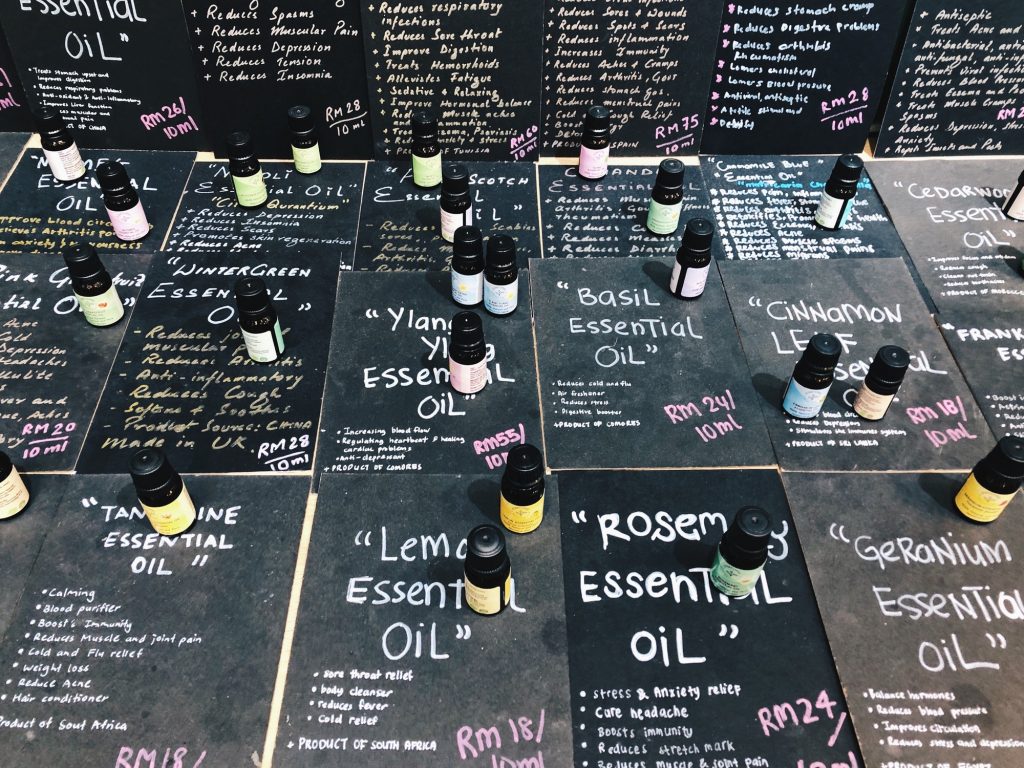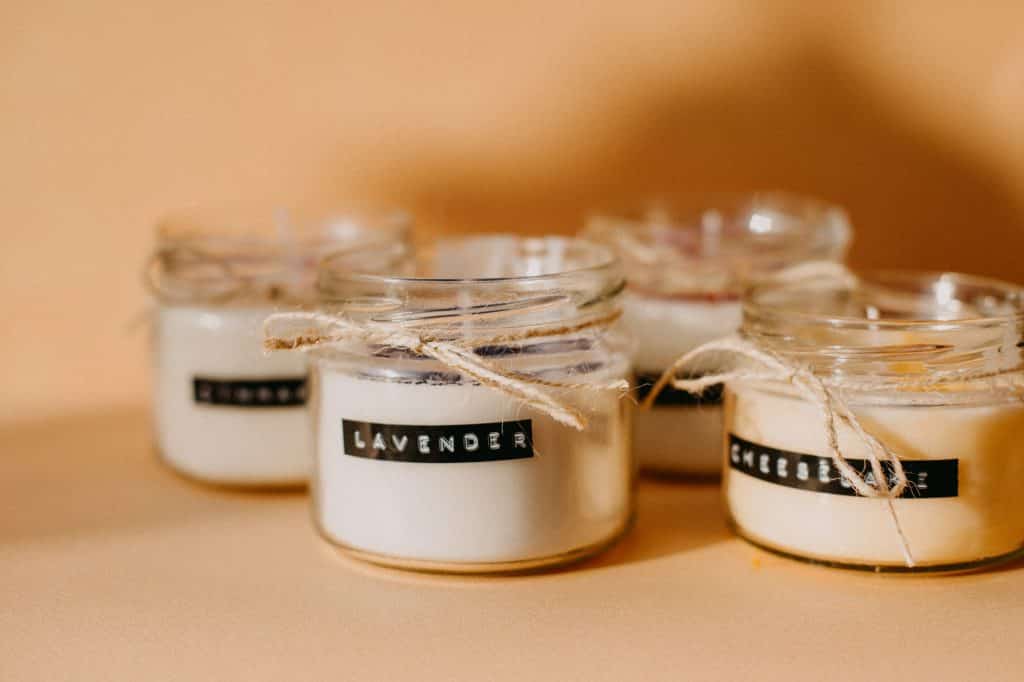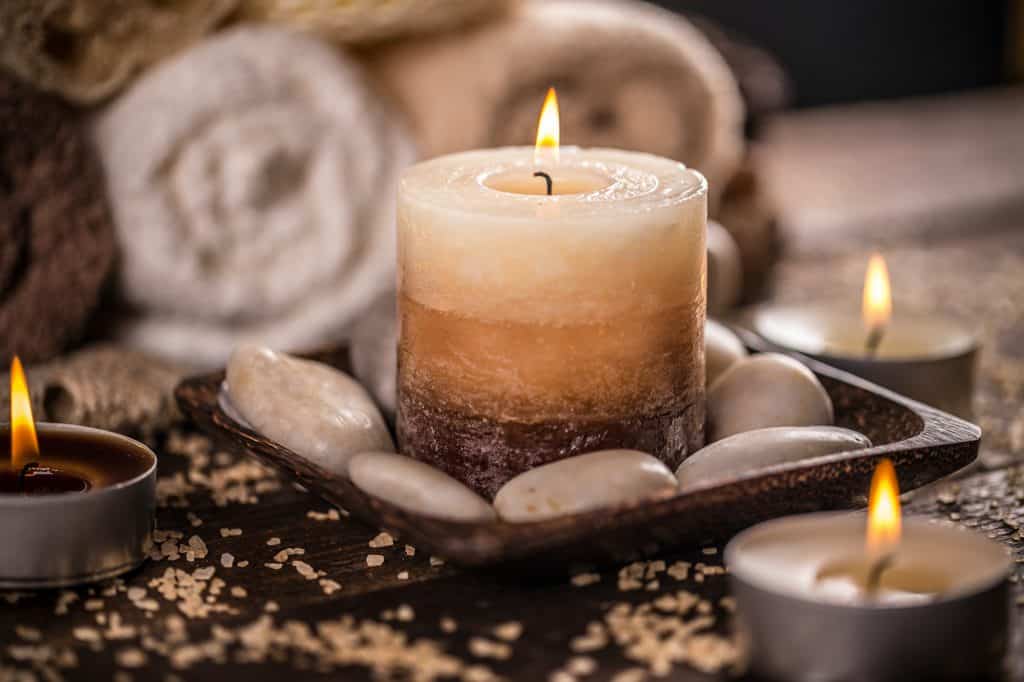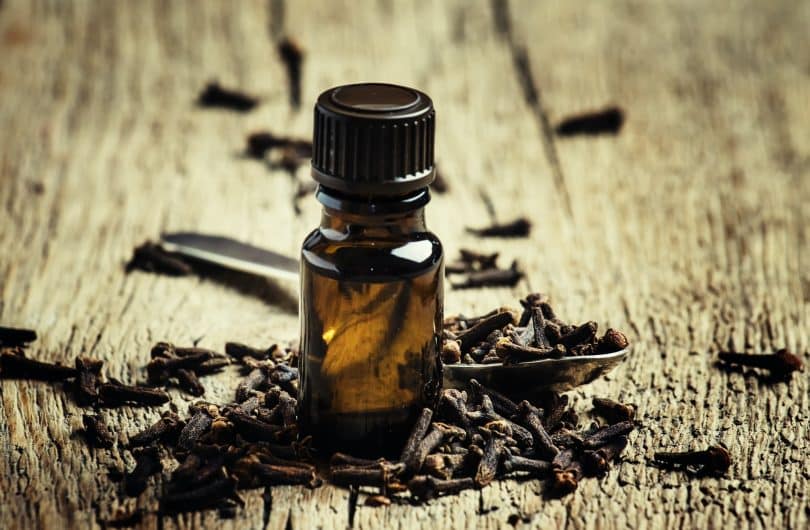Essential oils are often a good alternative to fragrance oils, especially if you’re sensitive to strong fragrance oils.
However, you still have to be mindful and test your oils, as it’s possible you’ll also be sensitive to some essential oils. Some essential oil companies offer sample kits to test out. If not, you can always ask around and see if you have a friend that has a collection of oils.
On to why you’re here—can essential oils be used in candles?
Spoiler alert: If you were hoping to get started with essential oil candles today, Etsy has some of the best options in its essential oils marketplace.

Can Essential Oils Be Used in Candles?
The short answer: yes!
However, you should always test your candles to make sure you are not sensitive to any of the oils. (Ideally, test the oils by themselves and see how you handle the smell.)
Now, the long answer:
While it’s safe to use essential oils in candles, it’s not exactly practical. Many natural waxes don’t have the best scent throw, and essential oils are very weak compared to regular fragrance oils and most other synthetic substances.
The best way to use essential oils in candles is to add them after the wax has cooled a bit. They have a much lower flashpoint than most fragrance oils, so be careful about adding them at higher temperatures. This will allow you to get the most benefit and scent from your oils.
In addition, some oils are much more volatile than others. Things like lemon, orange, and other citrus oils tend to evaporate much more quickly than heavier oils, so finding a good mixture for candle scents can be a little tough.
But with enough practice, you’ll get a feel for how best to balance oils and how much to add to your candles.
Related: The Best Essential Oils for Candle Making
How Much Essential Oil Should You Use in a Candle?
Some people like to add just a bit of essential oil and enjoy the natural scent of the candle (especially waxes like beeswax and soy). Others prefer a strong scent throw. It’s really up to you, but anywhere from 40 to 60 drops per pound of wax is common, more for a stronger scent throw.
If you’re having trouble getting a good scent throw, the wax is generally the culprit. Even different types of wax can have drastically different scent throw. Especially when working with citrus oils, you have to have a very mild wax that binds well with essential oils.
While I’d love to point you to an all-inclusive guide on what waxes and oils go together best, it really just takes a lot of time and testing.
If you’re looking for further resources, the best option is often just to head over to the forums and read conversations about what has worked for more experienced candle makers that have had the opportunity to test lots of different types of wax.

How to Get a Stronger Scent Throw
In general, essential oils have to be added at a lower temperature. They tend to evaporate more quickly at higher temperatures versus fragrance oils, which are a little more flexible.
There are some oils that just don’t bind well with wax. For instance, I’ve never been able to get most citrus oils to smell normally in a candle and just opt to limit their use to diffusers. (With the exception of some, like neroli and bergamot, which are a little “heavier.”)
I’ve had a better experience with things like some lavender oils, patchouli, sandalwood, Balsam of Peru, ginger, ylang-ylang, jasmine, frankincense, bergamot, and rose. (Obviously, some of these aren’t cost-efficient at all, like rose and frankincense.)
Lastly, you also want to make sure you allow your candles enough curing time. Whereas the typical curing time for paraffin wax/fragrance oil candles can finish curing in anywhere from 24-48 hours, soy candles with essential oils take up to two weeks.
Essential Oils vs Fragrance Oils
Many candle makers will opt to use pure essential oils that are purchased from the supplier over fragrance oils, as they would rather avoid the synthetic additives that fragrance oils usually include.
However, with today’s candle-making boom, it is much easier to find affordable fragrance oils than essential oils.
Fragrance oils are exactly what they sound like—man-made scents that are meant to smell pleasant. They’re typically created in a lab with some type of chemical base.
I use both, depending on what I’m using the candle for or who I’m making it for. In general, fragrance oils are much more cost-efficient and you run into far fewer issues with the resulting product.
However, some scents are incredibly difficult to replicate and nothing but essential oils do the trick. Especially if you’re burning your candles in a small room, in close proximity to where you’re sitting, you want to be mindful of what you’re burning.
And some of us just can’t handle most fragrance oils! This is often the reason people opt for essential oils. When you can find the perfect combination of natural wax and essential oils, nothing quite compares. (I’m still set on my lavender, bergamot, neroli, and ylang-ylang in a beeswax candle. It’s a little more expensive, but fragrance oils can’t compare.)
Maybe you’ll find that the smell of natural waxes is nice enough on its own, especially with naturally sweet-smelling waxes like beeswax.

Additional Resources
Looking for more candle making resources? Check out some more of the articles we have to help you get started:
- What Are the Best Essential Oils for Candle Making?
- Candle Making Equipment: Everything You Need to Start Making Candles
- What’s the Best Wax for Candle Making?
- The Best Scents for Candle Making
- 3 Reasons to Use Wood Wicks for Candle Making
- What’s the Best Soy Candle Making Kit?
- The Beginner’s Guide to Making Taper Candles
- How to Start a Candle Making Business







